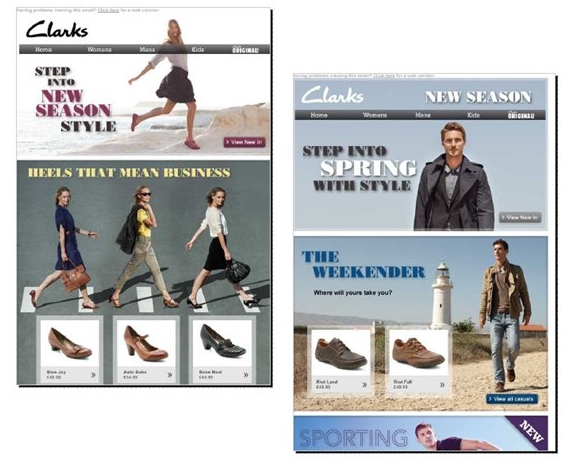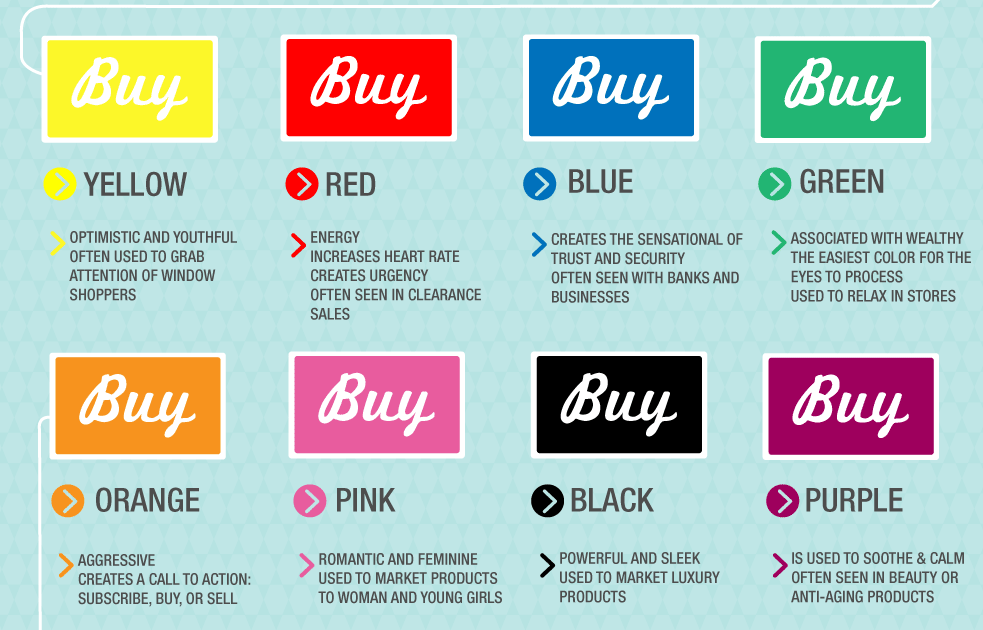A lot of marketers today consider email an old-fashioned strategy and prefer to focus on other marketing channels like social media, blogging or live streaming. However, email marketing is a steadily growing trend, which shows no sign of fading. You can find some impressive numbers, proving the power of email marketing in this article.
So let's find out the most important elements of a good email marketing strategy with Stephan Hovnanian, the owner of Shovi Websites and great email conversion optimization specialist!
Segment Your Email List Into Small Groups
What can you do to make your emails hit home? The answer is quite simple: segment your mailing list and tailor your messages to particular groups.
According to research conducted by MailChimp, open rates for segmented campaigns are 14.64 percent higher than non-segmented campaigns.
You can slice your email list into different pieces, for example, by location, age, gender, interests and so on. Some smart examples of email list segmentation are given here. But the main idea is to choose the segmentation that fits your ultimate goals and type of business. Let’s take an online clothes store as an example: dividing its audience by gender and age is a good practice for sending more relevant offers.

Image source: community.sagecrm.com
Stephan Hovnanian recommends creating these must-have segments for more targeted emails:
"Brand champion" segment: These are people who open, and will act upon nearly every email you send. The key is to know who your biggest champions are and use them to help you get more reach instead chasing conversions. "Network" segment: This will also be comprised of people who can get the word out about your brand and content. But where they differ from brand champions is in the fact that these people are actually in the media business (or have media connections). The point is, you should reach out to these people differently than your regular email subscribers, with different calls to action, so separate them. Interest- or content-type-based segments: These are people who have expressed interest in particular topics. You will want to send them emails about certain types of content (webinars, infographics, whitepapers, blog posts, Twitter chats, even local events) to people who have expressed interest in those types of content in the past.One special piece of advice from Stephan: “Don't be afraid to dial in on a specific group of people and leave the rest of your list out of a particular campaign. Email marketing success really is a matter of quality over quantity for both the company and its subscribers.”
Here is a practical example of how you can implement segmentation: “A Quick and Easy Workflow for Email Segmentation.”
If you want to get more insights on dividing your mailing list, check out these articles:
Segment Your Emails with Copy Formulas The Ultimate Guide to Email Marketing Apps (Chapter 4) Step-by-Step Plan for Better Email Marketing ResultsWrite a Catchy Subject Line
Pay particular attention to the subject line! Some helpful statistics: 69 percent of emails are marked as spam based only on their subject line, and 35 percent of emails are opened on because of their subject line.
So an enticing subject line can be your best friend, making your email stand out among tons of other messages. Or it can be your worst enemy, delivering it straight to the spam box.
A1: Subject lines w/provocative text, lowercase, numbers, punctuation, can all stand out in the inbox. Keep it balanced though #seocafe
— Stephan Hovnanian (@stephanhov) January 26, 2016
Here are some ideas for writing high-performing subject lines:
Eliminate everything that can trigger spam filters – these are the first barrier your email needs to overcome. - Do not use (or at least do not overuse) caps. - Avoid special characters. - Make sure you didn’t make any spelling mistakes. - Remember that some words are spam triggers! Make sure you don’t use the ones on this list. Some words work better than others. Here you can see the top 10 and bottom 10 words for subject lines in 2015, according to a report from Adestra:
Image source: adestra.com
Check out Sidekick’s presentation “ 19 Subject Line Stats Impacting Our Email Open Rates” to get more interesting insights.
Use numbers: They not only capture readers’ attention, but they make your message more informational and clear. Compare the following subjects: “How to double your blog traffic” and “Get 45% more traffic to your blog.” Ask questions: Subject lines phrased as questions have a higher open rate than ones phrased as statements, because they immediately engage the reader. Keep them short. Use a maximum 50 characters. Most of your subscribers are not going to read your subject line carefully. They will just quickly scan it to find out if they’re interested or not.You can find some actionable advice on writing subject lines in the article “ Improve Your Open Rates with These 12 Subject Line Tweaks” by Constant Contact.
Create Irresistible CTAs
Another element that is almost as important as a subject line is a call to action. A CTA tells the reader what exactly they need to do.
A1: For buttons, finish the sentence "I want you to ___" (download the whitepaper, save your seat, etc.) #seocafe
— Stephan Hovnanian (@stephanhov) January 26, 2016
Here’s what you need to know about crafting CTAs:
Use buttons instead of links: A lot of people open their emails from mobile devices, and buttons are easier to click than links. An email design tip from Stephan Hovnanian: “Make sure buttons and clickable text are spaced far enough away for big-fingered people on mobile.” Andy Crestodina in his article “ How to Design a Button: 7 Tips for Getting Clicked” gives more actionable advice on creating an appealing button. Make it clearly visible and easy to find: Readers are not going to search for a CTA in your email, it’s your duty to make it find them. According to Apple's iPhone Human Interface Guidelines, the recommended size for a button is 44x44 pixels. Use contrasting colors: They always grab users’ attention. Pick a color that matches the feeling you want to evoke (e.g., red for immediate action, green for relaxation, blue for trust). Also, choosing brighter colors for smaller buttons is a good trick. You can find more hints on choosing the right button color in this article.
Image source: blog.bufferapp.com
Find the Optimal Send Time
When it comes to email newsletters, timing matters a lot. So what is the best day of the week or time of the day to send email?
You can consider some common trends, for example: emails sent on Mondays and weekends usually have a low open rate. People are not likely to check their inbox on their days off, and on Monday they’re just flooded with tons of emails left unopened from weekends. You can get more tips on proper email timing from this great infographic by Kissmetrics.
But the best time will be unique to your email list, and sometimes for each segment of your list. So, in the end, only analyzing your own audience and A/B testing can give you the right answer.
A good trick to find a sending time that works best with your audience is spying on your direct competitors’ email campaigns. Alita Rodriguez has shared this experience with one or her clients: “My client’s competitor was sending emails on Wednesday, and we were sending them on Thursdays. So we decided to see what would happen if we actually sent ours on Tuesdays. So we did that, and the open rates, click-through rates and conversion rates of these emails increased a lot! And that was only because we were first to market.”
Optimize for Mobile Users
According to statistics, 45 percent of all emails are opened from mobile devices. That’s why it is essential to make sure your email looks equally good on any platform.
The best way to guarantee your email is readable from any device is to create a responsive design, even though it’s a time-consuming task. For a quick fix, there are few things you can do to make your email mobile friendly:
Reduce image sizes: The page will load faster.A2: Definitely optimised for mobile, and if you are using images, they must also been optimised for size. #emailmarketing #SEOcafe
— Chris Meier (@ChrisMeierZA) January 26, 2016
Place your CTA button above the fold: Studies show that a lot of people only read the few first lines of an email. So, if your CTA button is below the fold, move it higher or cut the email text. Make CTA buttons touch-friendly:A1: Email design tip: Make sure buttons and clickable text are spaced far enough away for big-fingered people on mobile #seocafe
— Stephan Hovnanian (@stephanhov) January 26, 2016
Use large font sizes and increased line spacing. Make your paragraphs shorter.Let's sum up. That's what can make your email campaign more successful: divide your mailing list into small groups and target each group separately, create compelling subject lines and powerful CTAs, define the best time for sending your emails and make sure they look good from any device. We also suggest that you have a look at these 5 types of emails every marketer should send and check whether you are already using all of them as part of your strategy. And what are your secrets of effective email marketing? Please, share them in comments!
Innovative SEO services
SEO is a patience game; no secret there. We`ll work with you to develop a Search strategy focused on producing increased traffic rankings in as early as 3-months.
A proven Allinclusive. SEO services for measuring, executing, and optimizing for Search Engine success. We say what we do and do what we say.
Our company as Semrush Agency Partner has designed a search engine optimization service that is both ethical and result-driven. We use the latest tools, strategies, and trends to help you move up in the search engines for the right keywords to get noticed by the right audience.
Today, you can schedule a Discovery call with us about your company needs.
Source:





